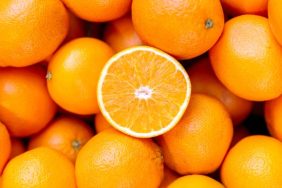Outsource Show, Installation View.
Unless you’ve been living under a rock, you’ve caught a number of articles about the business relationship between the U.S. and China. Curator Alexander Tarrant decided to look at U.S.-China economics on a micro-art level in considering the idea of outsourcing American art production to China. The result was the Outsource Show, which is on view at Werkartz/Arts District (927 S Santa Fe) through March 23, for which Tarrant asked 17 creatives who don’t paint to come up with ideas for paintings, which would then be outsourced to Dafen Village, a place in China’s Shenzhen province where knock-offs of great master oil paintings are produced.
What makes this show more than just a simple performance between U.S. and China micro-art economies are the back-and-forth exchanges that the artists have with a man named Zhang, who painted all the pieces in his Dafen Village studio. In this show, there’s a lot gleaned about cultural differences in terms of individualism vs. the worker, the nature of art production in the U.S., and what realistic painting looks like, bringing to light some surprising conversations.
Also: Exhibit | Edward S. Curtis: One Hundred Masterworks
For the show itself, every painting is arranged in the warehouse-like gallery in a straightforward way, hanging on the wall at eye-level. The viewer will observe paintings that include a back-and-forth with Zhang, the translators, and the artists, and paintings that are only the image. On the purely representational and obvious visual messaging end, paintings like Jason Woliner’s “Monomyth”, a 24 x 20 inch painting of an emoji with dollar signs for eyes painted over a white woman’s vagina, are the most successful. Though simple in its execution, the image is rather grim in its messaging — women’s bodies as money-makers, referencing the “three Ps” of prostitution, porn, and the patriarchy. And what does Zhang think of it? Apparently, he thinks: “This is beautiful!”

Jason Woliner, “Monomyth” (2015). Oil on Canvas. 24 x 20 inches
Other artists in the show try to create a dialogue or cultural exchange with Zhang, making the creations somewhat collaborative even though that’s not Zhang’s perspective on the work order. In Brian Christian’s “By _____ (Your Name) and Brian Christian” (2015), Brian asks Zhang to paint a portrait of him writing, since that’s his favorite thing to do, but to also include himself (Zhang) in the work. The text dialogue between them starts to feel performative; Brian asks Zhang to make more creative choices than he feels comfortable with, but he does it anyway, because he’s just trying to do his job. The project could never truly be collaborative, of course, because this wasn’t something that started on equal footing. Hence the title is creepily more appropriate, portraying Zhang as the ghost portrait-maker that he is.

Brian Christian, “By ______ (Your Name) and Brian Christian” (2015). Oil on Canvas. 20 x 24 inches
On the other completely literal end of the spectrum, David O’Reilly collects untitled screengrabs with either Photoshop, Word, or Final Cut Pro for Zhang to paint. These were just as boring to look at as they were for Zhang to paint. About all of these, Zhang says: “This is so hard to do. All these letters are so small. Look how big my brush is. Painting these made me feel bored.” Zhang knows all. What if the real art here is just Zhang’s commentary on the art?

Aesop Rock and Rob Sonic, “Gangster Heaven” (2015). Oil on Canvas. 25 x 21 inches.
Goofier paintings like Aesop Rock and Rob Sonic’s “Gangster Heaven” (2015), a four-panel repeated image of a woman wearing a one-piece, Jane Fonda-esque fitness outfit while rocking out to tunes from her tape player (throwback!) with a pug in a tux dropped in the middle, surrounded by the text “Is there a heaven for a gangster,” tend to do better than pieces that attempt a more nuanced interaction with Zhang. The back-and-forth about this image is just funny, with the translator Annie asking Zhang who he thinks the gangster is, and Zhang says: “The dog as the gangster I think is best.” Finally, we all know who the real gangster is in late capitalism’s never-ending production line that begins and ends with a Chinese man’s rendition of a grinning, overweight pug.








